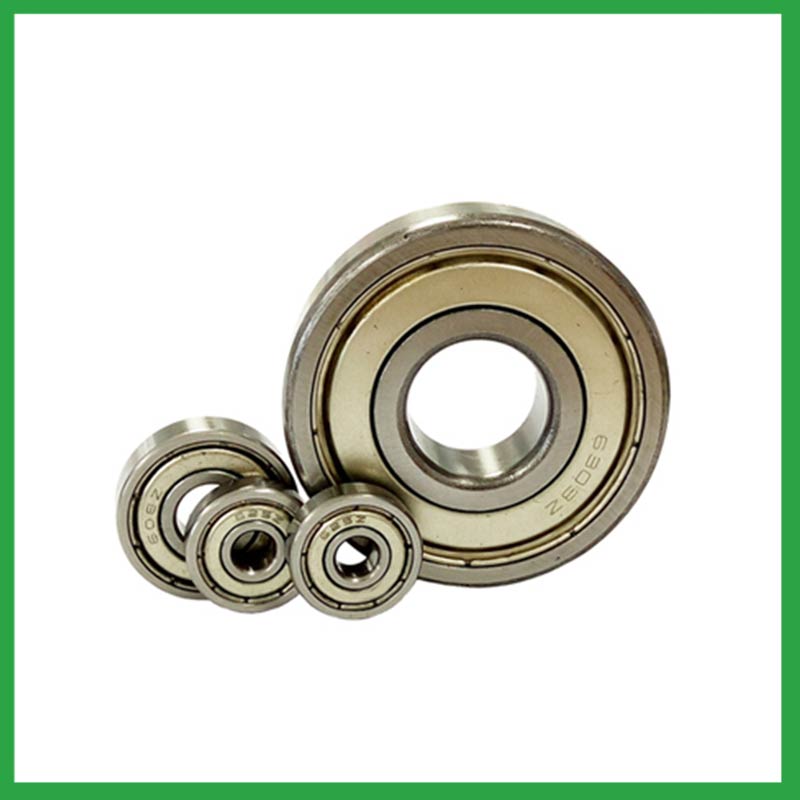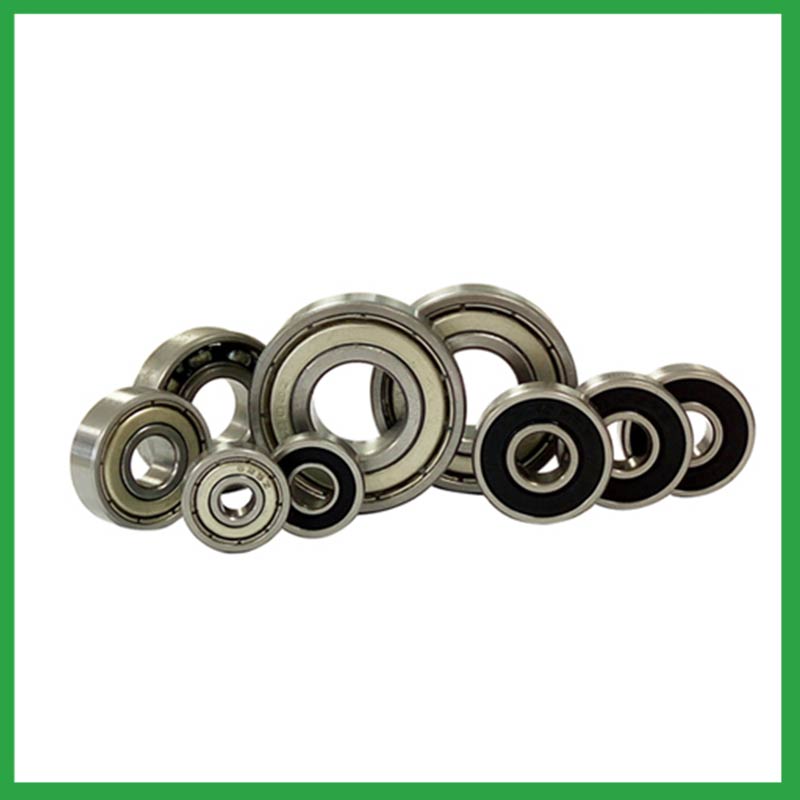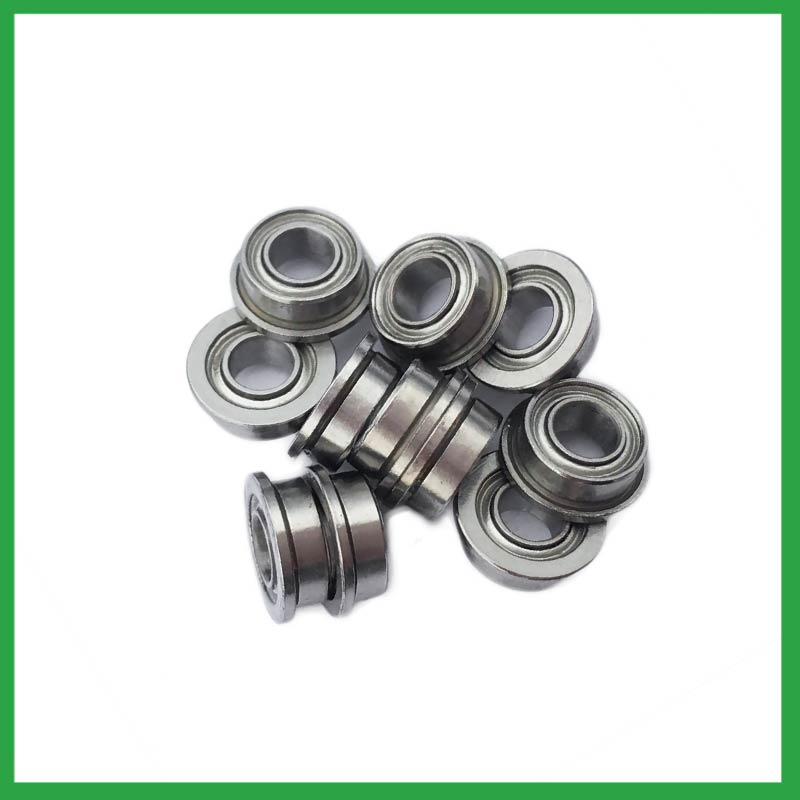PRODUCTS
CONTACT US
Ningbo Nide International Co., Ltd.
一一
· Contact person:Jack Zeng
· Mob/Whatspp/WeChat:0086-13738869026
· Email:emarketing@nide-group.com;marketing4@nide-group.com
· Add:No. 169, Wohushan Road, Daqi Subdistrict, Beilun District, Ningbo, China

Nide team could manufacture ball bearing as per customer’s drawing and samples.
If customer only has samples, we could also design drawing fo r our customer.
We also provide customized service.
Our ball bearing is widely applied the different industrials.
Haishu Nide International Co., Ltd is located in Ningbo City, Zhejiang Province. It is a high-tech enterprise that integrates research and development, application, production, and sales. Mainly producing high-performance motor cover and lamination,carbon brush,thermal protector,shaft,fan,magnet,ball bearing, etc. The product has a series of characteristics such as oil-free self-lubricating, wear resistance, corrosion and rust resistance, acid, alkali, salt and gas corrosion resistance, no magnetic and electrical insulation, high temperature and cold resistance, light weight, etc. It is widely used in industries such as BLDC motor,compress motor,air condition motor,electric automotive motor,electric bicycle motor,single and three phase induction motor,servo motor,washing machine motor.
By ceaselessly improve our quality and, our products win high praise for our favorable price, excellent service and timely delivery. No matter before or after sales, from quality to price, we have the complete and professional management system.

| Parameter | Information |
|---|---|
| Product Name | ball roller bearing |
| Brand Name | NIDE |
| Place of Origin | China |
| Material | stainless steel, etc. |
| Structure | Deep Groove |
| Color | Customized Color |
| Delivery Time | 5-7days |
| Port | Ningbo/Shanghai |
| Export region | Africa,Oceania,Asia |
| Export Country | India,Brazil,South Korea,Montserrat,Russia,Germany,Uganda,Romania...etc |
| Application | fan electric motor,food processing machinery, etc. |
| OEM/ODM | Yes |
| Size | Customized size |
| Stock | In Stock |
| Feature | Simple structure,Strong carrying capacity...etc |
| MOQ | 10 pieeces(Specific according to the model) |
| Certification | ISO9001,CE-stator coil winding machine,ISO9001:2015 certificate,etc |
| Supply Ability | 100000-500000 Piece/Pieces per Month |
| Lubricate | Oil Grease |
| Packaging Details | Suitable for sea transportation |
| Lead time (days) | 15-20 (To be negotiated) |
Please note: The above table data is for reference only. For specific information, please contact us.
Bearings with ball bearings as rolling elements mainly include deep groove ball bearings,adjustable ball bearings,self-aligning ball bearings,cylindrical roller bearings, etc.
During the disassembly process, the outer shell should be kept intact to avoid unnecessary damage;
When replacing installation components, attention should be paid to the accuracy of the support components to prevent deformation;
During the disassembly process, attention should be paid to protecting the surface quality of the ball bearing to ensure its performance;
During the operation, attention should be paid to removing surface dust to ensure the quality of the ball bearing.
Ball bearings have many advantages, making them highly competitive in the market.
Firstly, they are very durable and have good wear performance, making their service life longer than many other types of bearings.
Secondly, they are easy to install and can provide low friction performance in various applications.
Thirdly, they require a relatively low level of maintenance, making them cost-effective.
In addition, compared to many other types of bearings, their purchase cost is relatively low, making them an economical choice.




ball roller bearing---FAQs Guide
2.As a ball roller bearing manufacturer,can you supply samples?
3.Are there ball roller bearing designed for extreme temperature environments, such as cryogenic or furnace applications?
4.What are the after-sales services available for ball roller bearing?
5.Can ball roller bearing be customized with special coatings or treatments to meet specific industry standards or regulatory requirements?
6.What are the common materials used in ball roller bearing manufacturing?
7.What are the considerations for choosing between open, shielded, or sealed ball roller bearing in specific applications?
8.Can ball roller bearing operate in high-temperature environments like industrial ovens or furnaces, and how are they protected from heat-related damage?
9.Are there hybrid ball roller bearing that combine steel rings with ceramic balls to optimize performance in demanding applications?
10.Are there ongoing research and development efforts aimed at improving ball roller bearing materials, designs, and lubrication techniques?
11.What is the role of ball roller bearing in reducing friction and energy loss in rotating machinery?
12.What is the typical noise level associated with ball roller bearing, and how are noise-reduction techniques applied?
1.How do sealed ball roller bearing prevent the ingress of contaminants and extend the bearing's service life?
Contact seals are a type of seal where the sealing lip physically touches the inner raceway of the ball roller bearing. They create a narrow line or zone of contact that forms a barrier to prevent the escape of lubricants and the ingress of contaminants. Because the seal keeps dirt and other contaminants out, it can offer a longer operating life of the bearing or prevent premature bearing failure. Sealed bearings can be considered lubricated for life, which eliminates the need for a relubrication process.
2.As a ball roller bearing manufacturer,can you supply samples?
Sure, samples can be provided free of charge, and the buyer pay the postage of the sample.
3.Are there ball roller bearing designed for extreme temperature environments, such as cryogenic or furnace applications?
High temperature ball roller bearing use specialized lubricants to stand up to high temperatures. Grease-packed bearings are pre-filled with fluorine grease for high temperatures, while YS and SJ bearings use molybdenum disulfide (MoS2) solid lubricant to withstand temperatures up to 350°C and 400°C respectively.
4.What are the after-sales services available for ball roller bearing?
If you find problems or failures in the assembly or use of the bearings , which needs to consult and other services, please feedback to Nide International in time.
5.Can ball roller bearing be customized with special coatings or treatments to meet specific industry standards or regulatory requirements?
Yes, ball roller bearing can be customized with special coatings or treatments to meet specific industry standards or regulatory requirements.
1. Corrosion-resistant coatings: These coatings are used to protect the bearings from corrosion caused by exposure to moisture, chemicals, and other corrosive substances.
2. High-temperature coatings: These coatings are used to improve the thermal stability and performance of bearings in high-temperature environments.
3. Food-grade coatings: These coatings are specially designed for applications in the food and beverage industry, where bearings come into contact with food, beverage, or pharmaceutical products.
4. Anti-static and non-conductive coatings: These coatings are used to dissipate static electricity, which can cause damage to electronic components.
5. Specialized lubrication treatments: Bearings can be treated with specialized lubricants that meet specific industry standards or regulatory requirements.

6.What are the common materials used in ball roller bearing manufacturing?
Most ball roller bearing are made of a type of steel known as high carbon chromium steel, often called chrome steel. This is used for reasons of cost and durability. Bearings are also made from other materials such as stainless steel, ceramics and plastic.
7.What are the considerations for choosing between open, shielded, or sealed ball roller bearing in specific applications?
While sealed bearings offer superior protection and maintenance advantages, shielded ball roller bearing can be more suitable in situations where minimal friction and operating temperature are crucial. It's essential to assess the operational environment and demands before making a selection.
8.Can ball roller bearing operate in high-temperature environments like industrial ovens or furnaces, and how are they protected from heat-related damage?
ball roller bearing are capable of working at temperatures up to +842°F (+450 °C). Special lubricants, seals and coatings make this possible by protecting the ball bearings from heat damage.
9.Are there hybrid ball roller bearing that combine steel rings with ceramic balls to optimize performance in demanding applications?
Hybrid Ceramic ball roller bearing. Ceramic ball bearings (also known as hybrid bearings) are the one component that'll easily optimize the performance of your application. Hybrid bearings have ceramic (silicon nitride, Si3N4) balls and 52100 bearing steel rings.
10.Are there ongoing research and development efforts aimed at improving ball roller bearing materials, designs, and lubrication techniques?
A custom ball roller bearing can satisfy almost any customer’s needs. Your application may need a needle roller or ball bearing, a radial or angular contact design, a plain carbon steel bearing with anti-corrosion coatings or stainless steel, a thrust bearing or a spherical bearing, tight or loose radial play, sealed or non-sealed designs

11.What is the role of ball roller bearing in reducing friction and energy loss in rotating machinery?
ball roller bearing reduce friction by using smooth balls lubricated with oil or grease that freely roll between a smooth inner and outer surface. The main concept of the ball bearing is that objects that roll past each other produce less friction than if the objects were sliding against each other.
12.What is the typical noise level associated with ball roller bearing, and how are noise-reduction techniques applied?
To measure in accurate way the ball roller bearing noise under rotation during their manufacturing process is a key activity particularly in the production of medium, small and ultra-small deep groove ball bearings. This capability in bearings noise analysis has become the real distinguishing element between a standard bearings noise equipment and a superior class one.
The various types of vibration and sound in rolling bearings can be grouped in four main categories: structural, manufacturing, handling and other. The structural vibration consists mostly of race, click, squeal and cage noise: it can be continuous or intermittent depending on specific cases. The manufacturing vibration is instead related to the waviness noise generated by the geometrical imperfections of inner and outer ring and of rolling elements, being always continuous in nature. The so-called handling vibration is normally associated with flaw and contamination and is generating – in most of the cases – irregular noise. Then there are other types of vibrabition that include noise generated by sealing and lubricant (irregular) or by runout (continuous).

